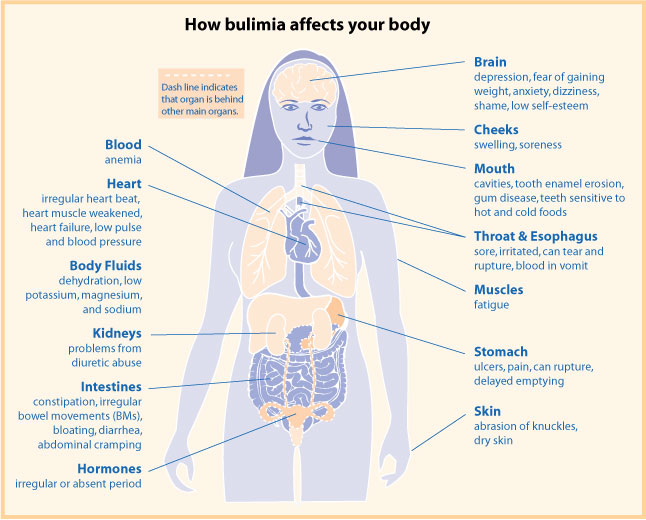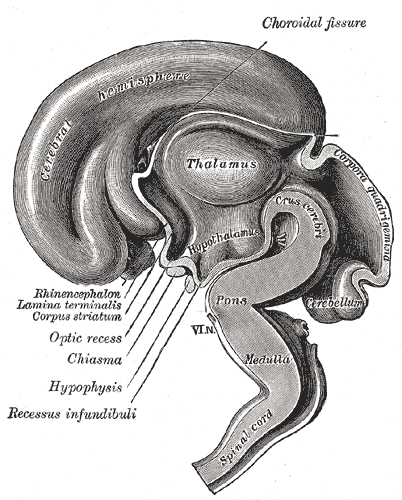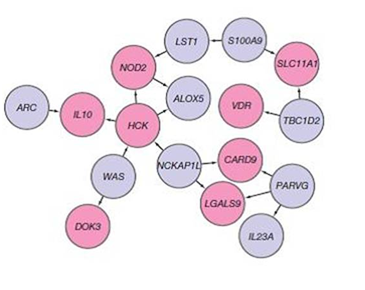|
Delayed Puberty
Delayed puberty is when a person lacks or has incomplete development of specific sexual characteristics past the usual age of onset of puberty. The person may have no physical or hormone, hormonal signs that puberty has begun. In the United States, girls are considered to have delayed puberty if they lack breast development by age 13 or have not started menstruating by age 15. Boys are considered to have delayed puberty if they lack enlargement of the testicles by age 14. Delayed puberty affects about 2% of adolescents. Most commonly, puberty may be delayed for several years and still occur normally, in which case it is considered constitutional delay of growth and puberty, a common variation of healthy physical development. Delay of puberty may also occur due to various causes such as malnutrition, various systemic diseases, or defects of the reproductive system (hypogonadism) or the body's responsiveness to sex hormones. Initial workup for delayed puberty not due to a chronic co ... [...More Info...] [...Related Items...] OR: [Wikipedia] [Google] [Baidu] |
Sexual Characteristics
Sexual characteristics are physical traits of an organism (typically of a sexually dimorphic organism) which are indicative of or resultant from biological sexual factors. These include both primary sex characteristics, such as gonads, and secondary sex characteristics. Humans In humans, sex organs or primary sexual characteristics, which are those a person is born with, can be distinguished from secondary sex characteristics, which develop later in life, usually during puberty. The development of both is controlled by sex hormones produced by the body after the initial fetal stage where the presence or absence of the Y-chromosome and/or the SRY gene determine development. Male primary sex characteristics are the penis, the scrotum and the ability to ejaculate when matured. Female primary sex characteristics are the vulva, vagina, uterus, fallopian tubes, cervix, and the ability to give birth and menstruate when matured. Hormones that express sexual differen ... [...More Info...] [...Related Items...] OR: [Wikipedia] [Google] [Baidu] |
Constitutional Delay
Constitutional delay of growth and puberty (CDGP) is a term describing a temporary delay in the skeletal growth and thus height of a child with no physical abnormalities causing the delay. Short stature may be the result of a growth pattern inherited from a parent (familial) or occur for no apparent reason (idiopathic). Typically at some point during childhood, growth slows down, eventually resuming at a normal rate. CDGP is the most common cause of short stature and delayed puberty. Synonyms * Constitutional Delay of Growth and Adolescence (CDGA) * Constitutional Growth Delay (CGD) See also * Idiopathic short stature * Failure to thrive Failure to thrive (FTT), also known as weight faltering or faltering growth, indicates insufficient weight gain or absence of appropriate physical growth in children. FTT is usually defined in terms of weight, and can be evaluated either by a low ... References {{Reflist Developmental biology Pediatrics Sexuality and age Human height< ... [...More Info...] [...Related Items...] OR: [Wikipedia] [Google] [Baidu] |
Anorexia Nervosa
Anorexia nervosa (AN), often referred to simply as anorexia, is an eating disorder characterized by Calorie restriction, food restriction, body image disturbance, fear of gaining weight, and an overpowering desire to be thin. Individuals with anorexia nervosa have a fear of being overweight or being seen as such, despite the fact that they are typically underweight. The DSM-5 describes this perceptual symptom as "disturbance in the way in which one's body weight or shape is experienced". In research and clinical settings, this symptom is called "body image disturbance" or Body dysmorphic disorder, body dysmorphia. Individuals with anorexia nervosa also often deny that they have a problem with low weight due to their altered perception of appearance. They may weigh themselves frequently, eat small amounts, and only eat certain foods. Some patients with anorexia nervosa Binge eating, binge eat and Purging disorder, purge to influence their weight or shape. Purging can manifest a ... [...More Info...] [...Related Items...] OR: [Wikipedia] [Google] [Baidu] |
Bulimia Nervosa
Bulimia nervosa, also known simply as bulimia, is an eating disorder characterized by binge eating (eating large quantities of food in a short period of time, often feeling out of control) followed by compensatory behaviors, such as self-induced vomiting or fasting, to prevent weight gain. Other efforts to lose weight may include the use of diuretics, laxatives, stimulants, water fasting, or excessive exercise. Most people with bulimia are at normal weight and have higher risk for other mental disorders, such as depression, anxiety, borderline personality disorder, bipolar disorder, and problems with drugs to alcohol. There is also a higher risk of suicide and self-harm. Bulimia is more common among those who have a close relative with the condition. The percentage risk that is estimated to be due to genetics is between 30% and 80%. Other risk factors for the disease include psychological stress, cultural pressure to attain a certain body type, poor self-esteem, and obes ... [...More Info...] [...Related Items...] OR: [Wikipedia] [Google] [Baidu] |
Gonad
A gonad, sex gland, or reproductive gland is a Heterocrine gland, mixed gland and sex organ that produces the gametes and sex hormones of an organism. Female reproductive cells are egg cells, and male reproductive cells are sperm. The male gonad, the testicle, produces sperm in the form of Spermatozoon, spermatozoa. The female gonad, the ovary, produces egg cells. Both of these gametes are haploid cells. Some hermaphroditic animals (and some humanssee Ovotesticular syndrome) have a type of gonad called an ovotestis. Evolution It is hard to find a common origin for gonads, but gonads most likely evolved independently several times. Regulation The gonads are controlled by luteinizing hormone (LH) and follicle-stimulating hormone (FSH), produced and secreted by gonadotropic cell, gonadotropes or gonadotrophins in the anterior pituitary gland. This secretion is regulated by gonadotropin-releasing hormone (GnRH) produced in the hypothalamus. Development The gonads develop f ... [...More Info...] [...Related Items...] OR: [Wikipedia] [Google] [Baidu] |
Hypothalamus
The hypothalamus (: hypothalami; ) is a small part of the vertebrate brain that contains a number of nucleus (neuroanatomy), nuclei with a variety of functions. One of the most important functions is to link the nervous system to the endocrine system via the pituitary gland. The hypothalamus is located below the thalamus and is part of the limbic system. It forms the Basal (anatomy), basal part of the diencephalon. All vertebrate brains contain a hypothalamus. In humans, it is about the size of an Almond#Nut, almond. The hypothalamus has the function of regulating certain metabolic biological process, processes and other activities of the autonomic nervous system. It biosynthesis, synthesizes and secretes certain neurohormones, called releasing hormones or hypothalamic hormones, and these in turn stimulate or inhibit the secretion of hormones from the pituitary gland. The hypothalamus controls thermoregulation, body temperature, hunger (physiology), hunger, important aspects o ... [...More Info...] [...Related Items...] OR: [Wikipedia] [Google] [Baidu] |
Inflammatory Bowel Disease
Inflammatory bowel disease (IBD) is a group of inflammatory conditions of the colon and small intestine, with Crohn's disease and ulcerative colitis (UC) being the principal types. Crohn's disease affects the small intestine and large intestine, as well as the mouth, esophagus, stomach and the anus, whereas UC primarily affects the colon and the rectum. Signs and symptoms In spite of Crohn's and UC being very different diseases, both may present with any of the following symptoms: abdominal pain, diarrhea, rectal bleeding, severe internal cramps/muscle spasms in the region of the pelvis and weight loss. Anemia is the most prevalent extraintestinal complication of inflammatory bowel disease (IBD). Associated complaints or diseases include arthritis, pyoderma gangrenosum, primary sclerosing cholangitis, and non-thyroidal illness syndrome (NTIS). Associations with deep vein thrombosis (DVT) and bronchiolitis obliterans organizing pneumonia (BOOP) have also been reported. ... [...More Info...] [...Related Items...] OR: [Wikipedia] [Google] [Baidu] |
Chronic Kidney Disease
Chronic kidney disease (CKD) is a type of long-term kidney disease, defined by the sustained presence of abnormal kidney function and/or abnormal kidney structure. To meet criteria for CKD, the abnormalities must be present for at least three months. Early in the course of CKD, patients are usually asymptomatic, but later symptoms may include pedal edema, leg swelling, feeling tired, vomiting, loss of appetite, and confusion. Complications can relate to hormonal dysfunction of the kidneys and include (in chronological order) Hypertension, high blood pressure (often related to activation of the renin–angiotensin system), renal osteodystrophy, bone disease, and anemia. Additionally CKD patients have markedly increased Cardiovascular disease, cardiovascular complications with increased risks of death and hospitalization. CKD can lead to kidney failure, end-stage kidney failure requiring kidney dialysis or kidney transplantation. Causes of chronic kidney disease include diabetic ne ... [...More Info...] [...Related Items...] OR: [Wikipedia] [Google] [Baidu] |
Hypothyroidism
Hypothyroidism is an endocrine disease in which the thyroid gland does not produce enough thyroid hormones. It can cause a number of symptoms, such as cold intolerance, poor ability to tolerate cold, fatigue, extreme fatigue, muscle aches, constipation, slow heart rate, Depression (mood), depression, and weight gain. Occasionally there may be swelling of the front part of the neck due to goiter. Untreated cases of hypothyroidism during pregnancy can lead to delays in child development, growth and intellectual development in the baby or congenital iodine deficiency syndrome. Worldwide, iodine deficiency, too little iodine in the diet is the most common cause of hypothyroidism. Hashimoto's thyroiditis, an autoimmune disease where the body's immune system reacts to the thyroid gland, is the most common cause of hypothyroidism in countries with sufficient dietary iodine. Less common causes include previous treatment with iodine-131, radioactive iodine, injury to the hypothalamus ... [...More Info...] [...Related Items...] OR: [Wikipedia] [Google] [Baidu] |
HIV/AIDS
The HIV, human immunodeficiency virus (HIV) is a retrovirus that attacks the immune system. Without treatment, it can lead to a spectrum of conditions including acquired immunodeficiency syndrome (AIDS). It is a Preventive healthcare, preventable disease. It can be managed with treatment and become a manageable chronic health condition. While there is no cure or vaccine for HIV, Management of HIV/AIDS, antiretroviral treatment can slow the course of the disease, and if used before significant disease progression, can extend the life expectancy of someone living with HIV to a nearly standard level. An HIV-positive person on treatment can expect to live a normal life, and die with the virus, not of it. Effective #Treatment, treatment for HIV-positive people (people living with HIV) involves a life-long regimen of medicine to suppress the virus, making the viral load undetectable. Treatment is recommended as soon as the diagnosis is made. An HIV-positive person who has an ... [...More Info...] [...Related Items...] OR: [Wikipedia] [Google] [Baidu] |
Cystic Fibrosis
Cystic fibrosis (CF) is a genetic disorder inherited in an autosomal recessive manner that impairs the normal clearance of Sputum, mucus from the lungs, which facilitates the colonization and infection of the lungs by bacteria, notably ''Staphylococcus aureus''. CF is a rare genetic disorder that affects mostly the lungs, but also the pancreas, liver, kidneys, and intestine. The hallmark feature of CF is the accumulation of thick mucus in different organs. Long-term issues include Shortness of breath, difficulty breathing and coughing up mucus as a result of frequent pneumonia, lung infections. Other signs and symptoms may include Sinusitis, sinus infections, failure to thrive, poor growth, Steatorrhea, fatty stool, Nail clubbing, clubbing of the fingers and toes, and infertility in most males. Different people may have different degrees of symptoms. Cystic fibrosis is inherited in an autosomal recessive manner. It is caused by the presence of mutations in both copies (alleles) ... [...More Info...] [...Related Items...] OR: [Wikipedia] [Google] [Baidu] |
Thalassemia
Thalassemias are a group of Genetic disorder, inherited blood disorders that manifest as the production of reduced hemoglobin. Symptoms depend on the type of thalassemia and can vary from none to severe, including death. Often there is mild to severe anemia (low red blood cells or hemoglobin) as thalassemia can affect the production of red blood cells and also affect how long the red blood cells live. Symptoms include fatigue (medical), tiredness, pallor, bone problems, an splenomegaly, enlarged spleen, jaundice, pulmonary hypertension, and dark urine. A child's growth and development may be slower than normal. Thalassemias are genetic disorders. Alpha thalassemia is caused by deficient production of the Hemoglobin subunit alpha, alpha globin component of hemoglobin, while beta thalassemia is a deficiency in the Hemoglobin subunit beta, beta globin component. The severity of alpha and beta thalassemia depends on how many of the four genes for alpha globin or two genes for beta ... [...More Info...] [...Related Items...] OR: [Wikipedia] [Google] [Baidu] |






